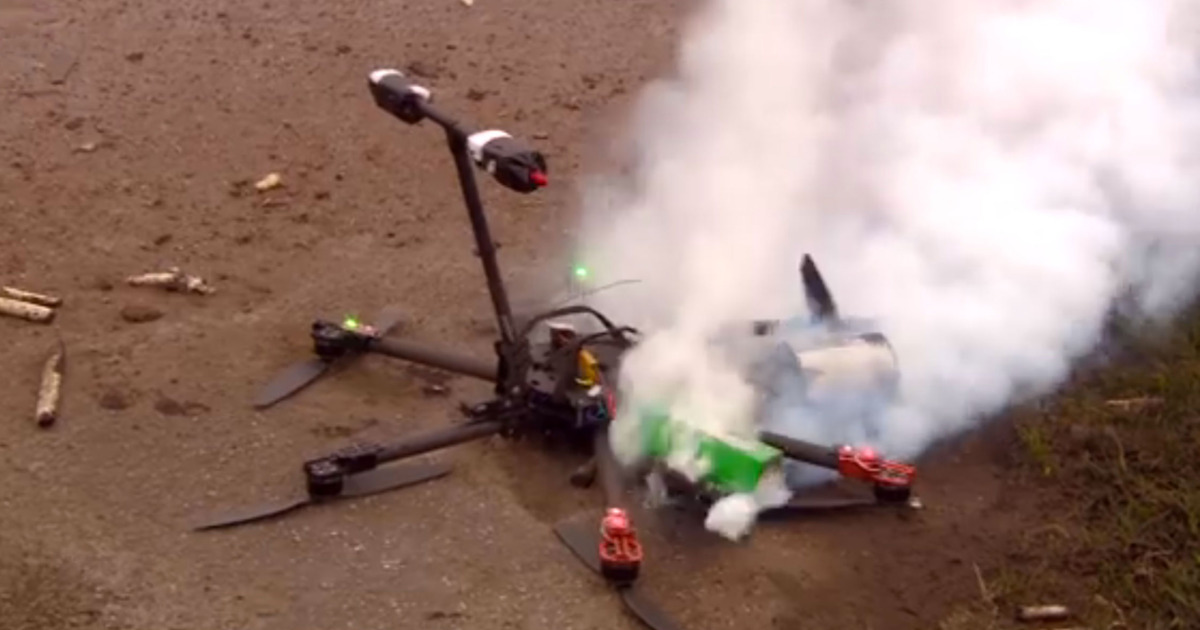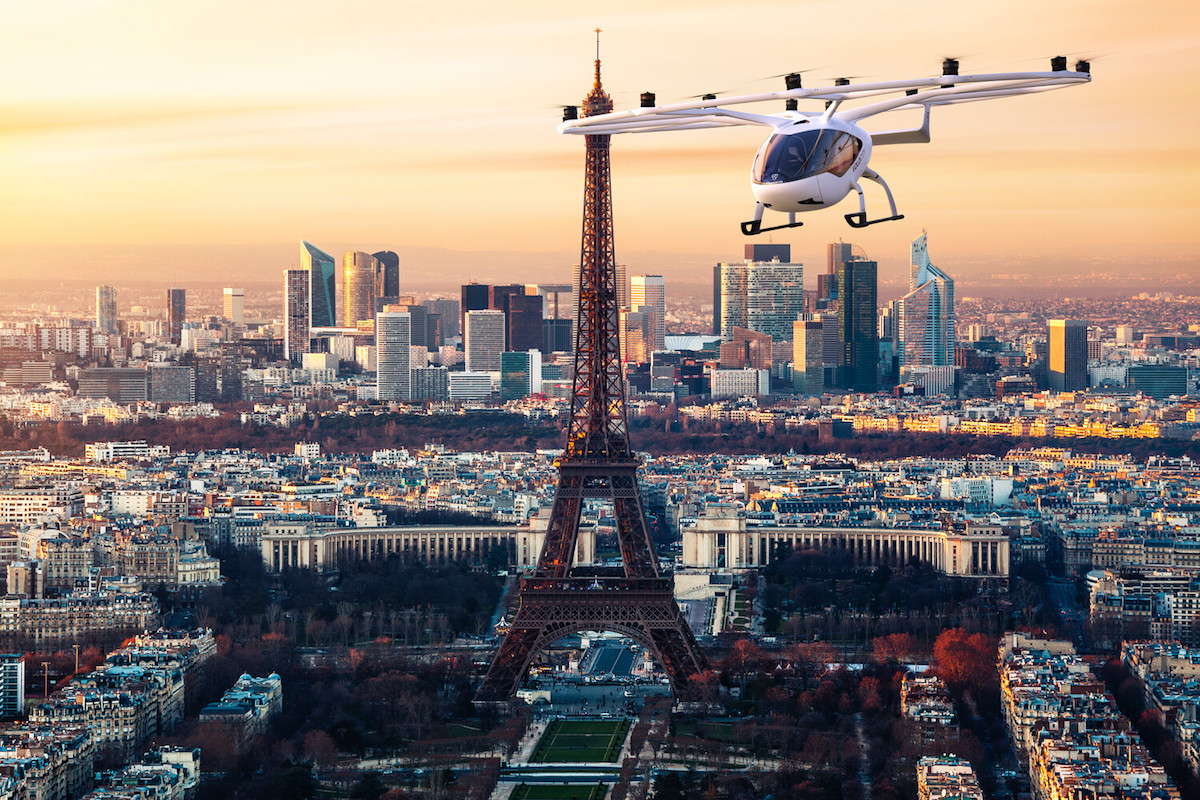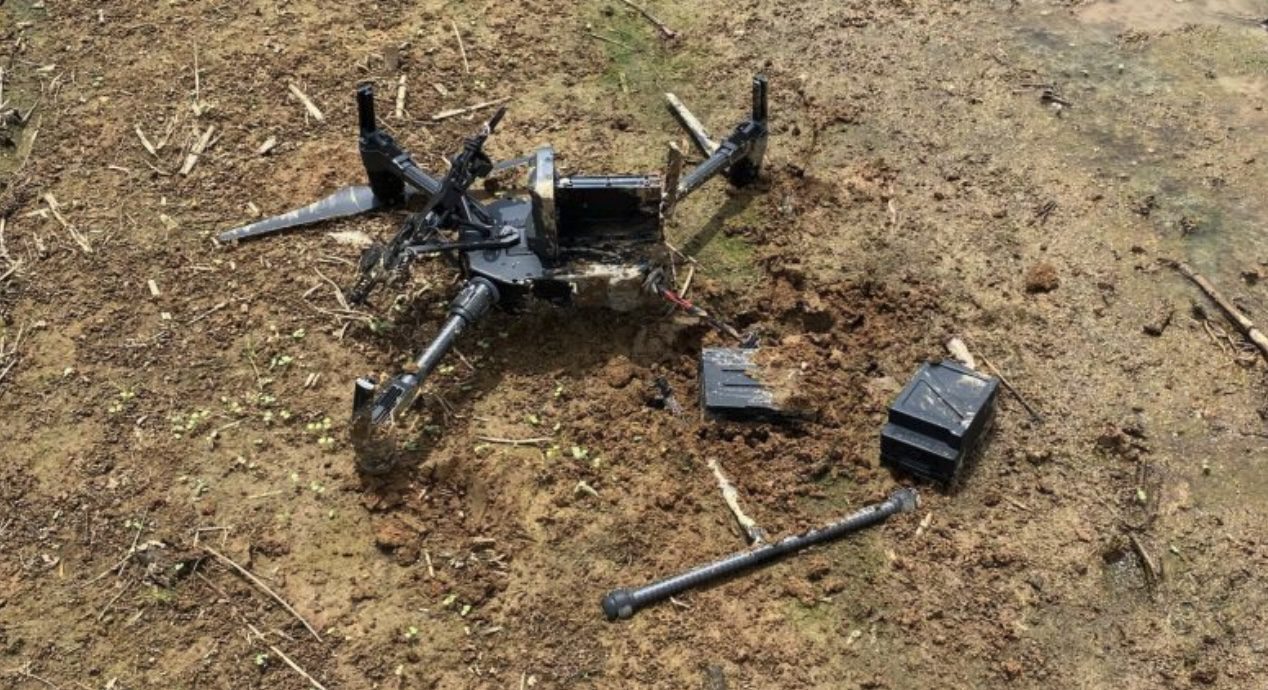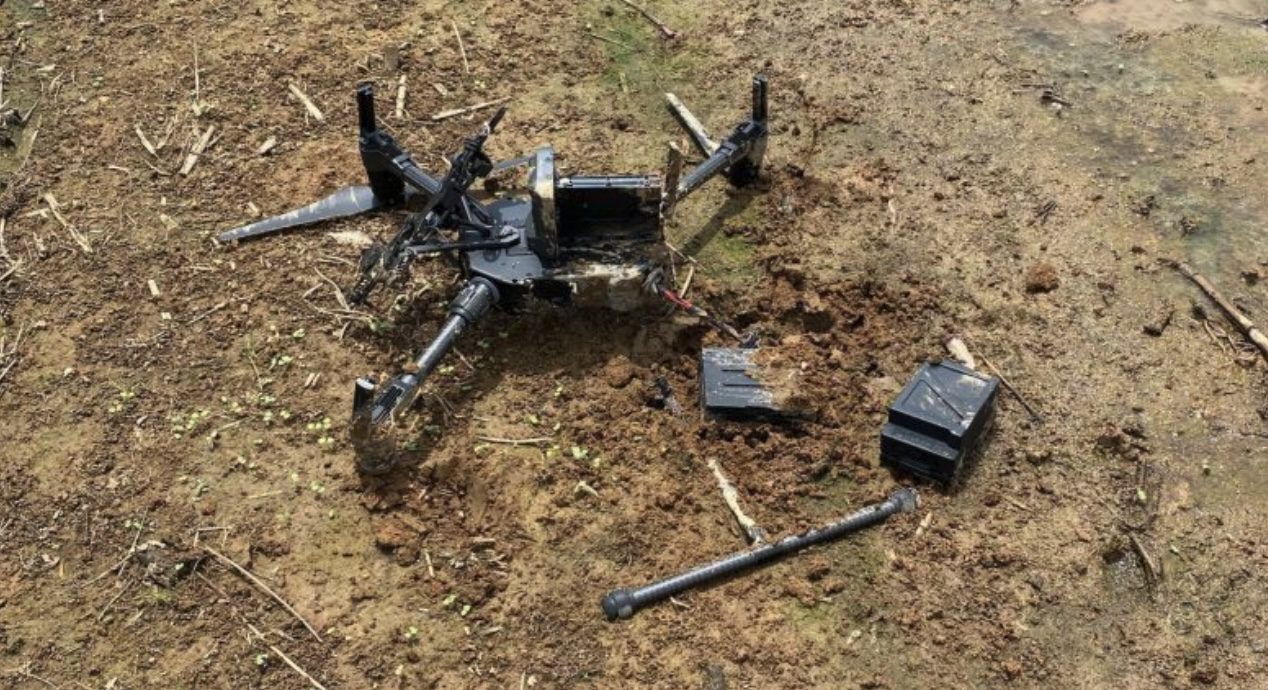Drone crash in Paris: Imagine the scene – a buzzing drone suddenly falling from the sky in the heart of Paris. This incident sparked immediate concern, raising questions about drone safety regulations, technological vulnerabilities, and the potential impact on both residents and the city’s image. This report delves into the details surrounding this event, examining the immediate aftermath, the investigation’s findings, public reaction, and the crucial legal and technological implications.
We’ll explore the specifics of the drone involved, its flight path, and potential causes of the crash. We’ll also look at the regulatory landscape governing drone use in Paris and compare this incident to similar events worldwide. Finally, we’ll consider technological advancements that could prevent future accidents of this nature.
Immediate Aftermath of the Drone Crash
The scene immediately following the drone crash in Paris was chaotic, yet strangely silent at first. The impact, depending on the drone’s size and speed, would have created a sudden, jarring event, quickly followed by the aftermath. The exact location and time of day would significantly influence the immediate reactions and the overall scene. Imagine, for example, a sunny afternoon in a bustling tourist area versus a quiet evening in a residential neighborhood.The type and extent of damage would vary greatly.
A smaller drone might only cause minor damage, perhaps scratching a car or breaking a window. A larger, heavier drone, however, could cause significant property damage, potentially damaging buildings, vehicles, or even injuring people. The initial reactions of witnesses would range from shock and disbelief to immediate attempts to assist any injured parties or secure the area.
If the crash occurred near a public service, such as a power station or transportation hub, the disruption could be substantial, causing delays and impacting the functioning of the city.
Damage Assessment and Injuries
The immediate priority following a drone crash would be assessing the extent of damage and injuries. Emergency responders would need to evaluate the scene for structural damage, downed power lines, or other hazards. A thorough search for victims would be necessary, and first aid would be administered to anyone injured. The severity of injuries would depend heavily on the drone’s size, speed, and the location of the impact.
For instance, a crash in a crowded area could lead to multiple injuries, whereas a crash in an empty field might result in no injuries at all. A detailed report would be compiled, documenting the types of injuries, the number of victims, and the extent of property damage.
Timeline of Events
The timeline would begin with the moment of impact. The exact time would be crucial for investigators. This would be followed by the initial reactions of bystanders, who might call emergency services or attempt to assist those involved. The arrival time of emergency services would vary depending on the location and the availability of resources. In a densely populated area like Paris, response times are generally swift.
Once on the scene, emergency responders would secure the area, assess the situation, and begin treating the injured. The investigation would then commence, aiming to determine the cause of the crash and identify any responsible parties. This initial phase would involve securing the drone wreckage, interviewing witnesses, and gathering evidence. A preliminary report might be released shortly afterward, summarizing the key findings and outlining the next steps in the investigation.
Investigation and Response: Drone Crash In Paris

Following the drone crash in Paris, a multi-agency investigation was immediately launched to determine the cause of the incident, identify those responsible, and implement preventative measures. The investigation involved a coordinated effort between various French authorities, including the Direction Générale de l’Aviation Civile (DGAC), the French police (Police Nationale), and potentially the gendarmerie depending on the location and circumstances.
Each agency brought specialized expertise to the investigation, from air traffic control records and drone regulations to forensic analysis and criminal investigation.The investigation involved a thorough examination of the drone’s wreckage, analyzing its components for any signs of mechanical failure or software malfunction. Investigators also scrutinized flight data, if available, to reconstruct the drone’s flight path and identify any anomalies.
This would include reviewing any available video footage from the drone itself, if it possessed such capabilities. Additionally, investigators examined the drone’s registration and operational history to determine compliance with regulations and identify the owner or operator.
Eyewitness Accounts and Verification
Gathering eyewitness accounts was a crucial part of the investigation. Police officers and investigators canvassed the area surrounding the crash site, interviewing individuals who may have witnessed the incident. These accounts were recorded and documented, with details such as the time of the incident, the drone’s trajectory, and any unusual observations meticulously noted. Verification methods included comparing eyewitness testimonies with available video footage from security cameras in the vicinity, and cross-referencing accounts to identify inconsistencies or corroborating details.
For instance, if multiple witnesses reported seeing the drone veer sharply before crashing, this could support other evidence pointing to a technical malfunction or external interference.
Preventative Measures
In the wake of the crash, several preventative measures were likely implemented or strengthened. This might include stricter drone registration requirements, enhanced enforcement of existing no-fly zones in sensitive areas like Paris, and improved public awareness campaigns emphasizing safe drone operation. The DGAC might review and potentially revise existing regulations concerning drone operation in urban environments, perhaps implementing more stringent licensing or certification processes for drone pilots.
Technological solutions, such as drone detection and counter-drone systems, could also be explored and deployed in high-risk areas. Furthermore, improved coordination between various agencies responsible for airspace management could enhance the overall safety and security of the airspace. For example, the incident could lead to better communication protocols between air traffic control and law enforcement during drone-related incidents.
Drone Specifications and Operational Details

Understanding the specifics of the drone involved and its operational parameters is crucial in determining the cause of the Paris crash. This section details the drone’s characteristics, flight path, and potential contributing factors.
That drone crash in Paris got everyone talking about safety regulations, right? It made me think about similar incidents, like that spectacular orlando drone show accident which highlighted the importance of fail-safes. Ultimately, both incidents underscore the need for better preventative measures to avoid future drone crashes in crowded areas like Paris.
The drone involved in the incident was identified as a DJI Matrice 300 RTK. This model is a professional-grade drone known for its robust design, advanced features, and payload capacity. Its specifications include a maximum takeoff weight of approximately 7.7 kg (17 lbs), a flight time of up to 55 minutes, and a maximum range of 15 kilometers. The drone’s size is considerable, making it easily visible in flight, although its precise dimensions are readily available through official DJI specifications.
Heard about that drone crash in Paris? Crazy stuff, right? It got me thinking about all the unexplained drone activity, like the one detailed in this article about a mystery drone in Paris – seriously weird stuff. Makes you wonder if there’s a connection between that unsolved mystery and the recent crash. Maybe it’s all part of some bigger, weirder picture.
Hopefully, we’ll get some answers soon about the Paris drone crash.
Drone Flight Path and Operational Data, Drone crash in paris
Reconstructing the drone’s flight path is a key aspect of the investigation. Preliminary data suggests the drone was operating at a relatively low altitude, approximately 50-75 meters above ground level, before the crash. Its speed, according to initial reports, was moderate, consistent with typical survey or mapping operations. The drone’s direction of flight was initially towards the Eiffel Tower, but precise GPS data from the flight recorder (if recovered) will provide more accurate information.
The final moments of the flight are under intense scrutiny, with investigators attempting to identify any anomalies in the drone’s movement immediately prior to impact.
Potential Causes of the Drone Crash
Several factors could have contributed to the drone crash. A comprehensive analysis is required to pinpoint the exact cause. The following table Artikels the potential contributing factors, categorized for clarity.
| Category | Potential Cause | Evidence/Indicators | Mitigation Strategies |
|---|---|---|---|
| Mechanical Failure | Rotor malfunction | Sudden loss of altitude, unusual vibrations reported by witnesses (if any). Examination of the drone’s physical components post-crash. | Regular maintenance checks, pre-flight inspections, use of high-quality components. |
| Pilot Error | Loss of control, incorrect flight parameters | Analysis of flight logs, pilot’s experience and training level, witness testimonies (if any). | Comprehensive pilot training, adherence to safety protocols, use of flight simulators for practice. |
| External Factors | Adverse weather conditions (strong winds, rain), collision with an object (bird, other drone) | Weather data at the time of the incident, witness accounts, physical evidence on the drone (impact marks). | Avoid flying in adverse weather conditions, maintaining safe distances from other objects, use of obstacle avoidance systems. |
| Software Glitch | Unexpected software malfunction or GPS failure. | Examination of the drone’s flight controller and software. Analysis of flight logs for anomalies. | Regular software updates, use of reliable GPS systems, redundancy measures in drone systems. |
Impact and Public Reaction

The drone crash in Paris, while not resulting in widespread injury or significant property damage, had a palpable impact on the city’s residents and businesses, sparking a wave of reactions across various media platforms. The immediate aftermath saw a temporary disruption to air traffic in the affected area, causing minor delays for flights and potentially impacting tourism. Businesses near the crash site experienced brief closures or reduced customer traffic due to the emergency response and subsequent investigation.The incident’s economic impact was largely localized and short-lived.
While the direct costs associated with the drone’s recovery and the investigation were borne by relevant authorities, indirect economic losses, such as lost business revenue for nearby establishments, were likely minimal. However, the potential for larger-scale economic consequences, particularly damage to tourism reputation, was a significant concern for city officials.
Public Reactions to the Drone Crash
Public reaction to the drone crash was a complex mix of fear, curiosity, and frustration, expressed across various platforms. News outlets reported on the event, highlighting the disruption caused and the ongoing investigation. Social media saw a flurry of posts, ranging from concerned inquiries to humorous memes.
- Negative Reactions: Many Parisians expressed concerns about safety and security, particularly given the potential for drones to be used maliciously. Social media was rife with comments highlighting the lack of regulations and the potential for future incidents. News reports focused on the potential dangers of uncontrolled drone flights in densely populated areas.
- Positive Reactions: Some social media users expressed admiration for the swift response of emergency services and the efficiency of the investigation. Comments praising the professionalism of the authorities involved were also common. The relatively quick resolution of the situation also generated some positive sentiment.
- Neutral Reactions: A significant portion of the public reaction was characterized by curiosity and a desire for information. Many people shared news articles and updates, indicating a passive engagement with the event rather than strong emotional responses. Some simply documented the event through photos or videos, demonstrating a neutral observational stance.
Effect on Public Perception of Drone Technology
The Paris drone crash contributed to a nuanced shift in public perception of drone technology. While the incident didn’t trigger widespread panic, it did reinforce existing concerns about safety and regulation. The event served as a stark reminder of the potential risks associated with the increasingly prevalent use of drones, particularly in urban environments. Prior to the incident, many Parisians likely viewed drones as a relatively benign technology, perhaps associating them with photography or recreational activities.
The crash, however, highlighted the potential for unintended consequences and the need for robust safety measures and stricter regulations. This incident, coupled with other similar events globally, may lead to a more cautious and critical public view of drone technology in the future, potentially influencing policy decisions and public discourse on drone usage.
Legal and Regulatory Implications
The drone crash in Paris raises significant legal and regulatory questions regarding drone operation within the city’s airspace. Existing regulations aim to balance the innovative potential of drone technology with public safety and security concerns. Understanding these regulations and comparing the incident to similar events elsewhere helps illuminate potential legal ramifications for those involved.
Existing Drone Regulations in Paris
Paris, like many major cities, has specific regulations governing drone operation. These regulations typically cover aspects such as registration, pilot licensing, operational limitations (altitude, distance from populated areas, flight times), and prohibited areas (airports, sensitive sites, etc.). Penalties for violating these regulations range from fines to potential imprisonment, depending on the severity of the infraction and any resulting damage or harm.
Specific details on permitted flight zones and operational restrictions are usually publicly available through the French Directorate-General for Civil Aviation (DGAC) and local authorities. These regulations are frequently updated to reflect technological advancements and evolving safety concerns. For instance, restrictions around major events or areas with high pedestrian traffic are often implemented temporarily.
Comparison with Similar Incidents in Other Cities
Drone crashes in densely populated urban areas, while thankfully uncommon, have occurred in other major cities worldwide. Incidents in New York City, London, and Hong Kong, for example, have highlighted similar challenges in regulating drone use. Commonalities include the difficulty in tracking and identifying rogue drones, the potential for significant damage or injury in populated areas, and the challenges in enforcing regulations effectively.
Differences in regulatory responses often stem from variations in national aviation laws, local ordinances, and enforcement capabilities. Some cities have adopted stricter regulations and implemented advanced drone detection technologies more quickly than others, reflecting different risk assessments and prioritization of safety measures. The specific legal consequences for the drone operator and other involved parties also vary considerably depending on local laws and the circumstances of each incident.
Potential Legal Ramifications
The legal ramifications for the Paris drone crash will depend on several factors, including the cause of the crash, the extent of the damage, and the identification of the drone operator. Potential charges against the operator could range from negligence and property damage to more serious offences if injury or death resulted. Depending on the investigation’s findings, manufacturers or other involved parties (e.g., companies providing drone maintenance or flight planning services) might face legal action if their negligence contributed to the accident.
Civil lawsuits by affected individuals or entities are also a possibility. The investigation will need to establish liability and determine the appropriate legal recourse. Insurance coverage will also play a crucial role in determining financial responsibility for damages. Precedents from similar incidents in other jurisdictions will inform the legal process, but the specific outcome will be shaped by the unique circumstances of the Paris crash and the interpretation of French law.
Technological Considerations
The Paris drone crash highlights the need for enhanced drone safety technologies. While current regulations and safety features exist, improvements are crucial to mitigate risks and prevent future incidents. This section explores potential technological advancements and examines the effectiveness of existing safety mechanisms.Technological improvements to prevent future drone crashes could focus on several key areas. Enhanced obstacle avoidance systems, utilizing advanced sensor fusion (combining data from multiple sensors like lidar, radar, and cameras) and sophisticated algorithms, could significantly reduce the likelihood of collisions.
More robust GPS systems, perhaps incorporating multiple satellite constellations and ground-based augmentation systems, would provide more reliable positioning data, even in challenging urban environments like Paris. Furthermore, improved battery management systems and fail-safe mechanisms, such as redundant power sources or automatic emergency landings, could prevent crashes caused by power failures. Finally, advanced communication protocols with improved resilience to interference could ensure reliable control even in crowded airspace.
Drone Safety Feature Effectiveness
Existing drone safety features vary widely in their effectiveness. Geofencing, which restricts drone operation to predefined areas, is a widely implemented feature but its effectiveness depends heavily on the accuracy of the geofence data and the drone’s ability to reliably adhere to the restrictions. Successful implementations include restricting drone flights near airports, while failures arise from inaccurate geofence mapping or drones circumventing the restrictions.
That drone crash in Paris got me thinking about drone safety protocols. It reminds me of a similar incident, albeit on a larger scale – check out this article about the orlando drone show accident for a pretty wild example. The Paris crash, while smaller, highlights the same need for rigorous safety checks and operator training to prevent future mishaps.
Return-to-home (RTH) functionality, which automatically guides the drone back to its launch point in case of signal loss, is another common safety feature. However, its effectiveness is contingent on having a clear line of sight to the home point and sufficient battery life. Successful implementations are common in open areas, but failures can occur in dense urban environments or with unexpected power outages.
Flight Data Recorder Description
The availability of a flight data recorder (FDR) on the drone involved in the Paris crash is crucial for the investigation. If present, the FDR would likely contain a wealth of information, including the drone’s GPS coordinates throughout the flight, altitude, speed, heading, battery voltage, motor RPMs, and sensor readings (e.g., from obstacle avoidance systems). The data from the FDR, along with other information like the pilot’s control inputs and pre-flight checks, would allow investigators to reconstruct the events leading up to the crash and identify potential contributing factors.
This data is critical in determining whether technological failures or human error played a role in the incident. For example, if the FDR showed a sudden loss of GPS signal or a malfunction in the obstacle avoidance system just prior to the crash, this would strongly suggest a technological failure. Conversely, if the data showed the drone operating outside its safe operational limits, it might point towards pilot error.
Outcome Summary
The drone crash in Paris serves as a stark reminder of the evolving challenges presented by unmanned aerial vehicles. While drones offer numerous benefits, ensuring their safe and responsible operation is paramount. This incident highlights the need for stricter regulations, improved technology, and increased public awareness to mitigate risks and prevent similar occurrences in the future. The investigation’s conclusions, along with technological advancements, will undoubtedly shape future drone safety protocols and influence how cities worldwide manage the integration of drones into their airspace.
Questions Often Asked
What type of damage was caused by the drone crash?
The extent of damage varied. The report should specify whether there was property damage, injuries, or disruption to public services.
Who was responsible for investigating the crash?
This will likely involve multiple agencies; the report should name the key organizations involved in the investigation.
What were the immediate public reactions to the event?
The report will analyze social media posts and news reports to categorize public reactions as positive, negative, or neutral.
What are the potential legal consequences for the drone operator?
This depends on the findings of the investigation and existing French laws; the report should Artikel potential penalties.
